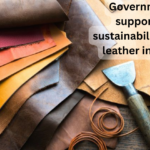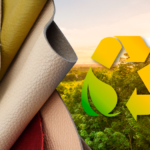Leather is made through a process called tanning, which transforms raw animal hides into a durable, non-perishable material. Here’s a simplified overview of the process:
Preparation:
Curing: Fresh hides are preserved to prevent decay during transportation to the tannery. This is typically done through salting or freezing.
Soaking: The hides are soaked in water to remove salt and prepare them for further processing.
Liming: The hides are immersed in a lime solution to remove hair, loosen tissue, and swell the fibers.
Dehairing: The hair is mechanically removed.
Fleshing: Excess flesh and fat are removed from the hide.
Pickling: The hides are soaked in a solution of acid and salt to prepare them for the tanning process.
Tanning: The hides are treated with tanning agents, which stabilize the collagen fibers and prevent decay. Common tanning agents include chromium salts (for chrome-tanned leather) and plant extracts (for vegetable-tanned leather).
Shaving: The hides are shaved to achieve a uniform thickness.
Dyeing: Dyes are applied to achieve the desired color.
Finishing: The leather is treated with various finishes, such as oils, waxes, and resins, to enhance its appearance, feel, and durability.
Drying and Conditioning:
Drying: The leather is dried to remove excess moisture.
Conditioning: The leather is treated to restore its flexibility and softness.
The specific steps and techniques used in leather production can vary depending on the type of leather being produced and the desired end-use.














